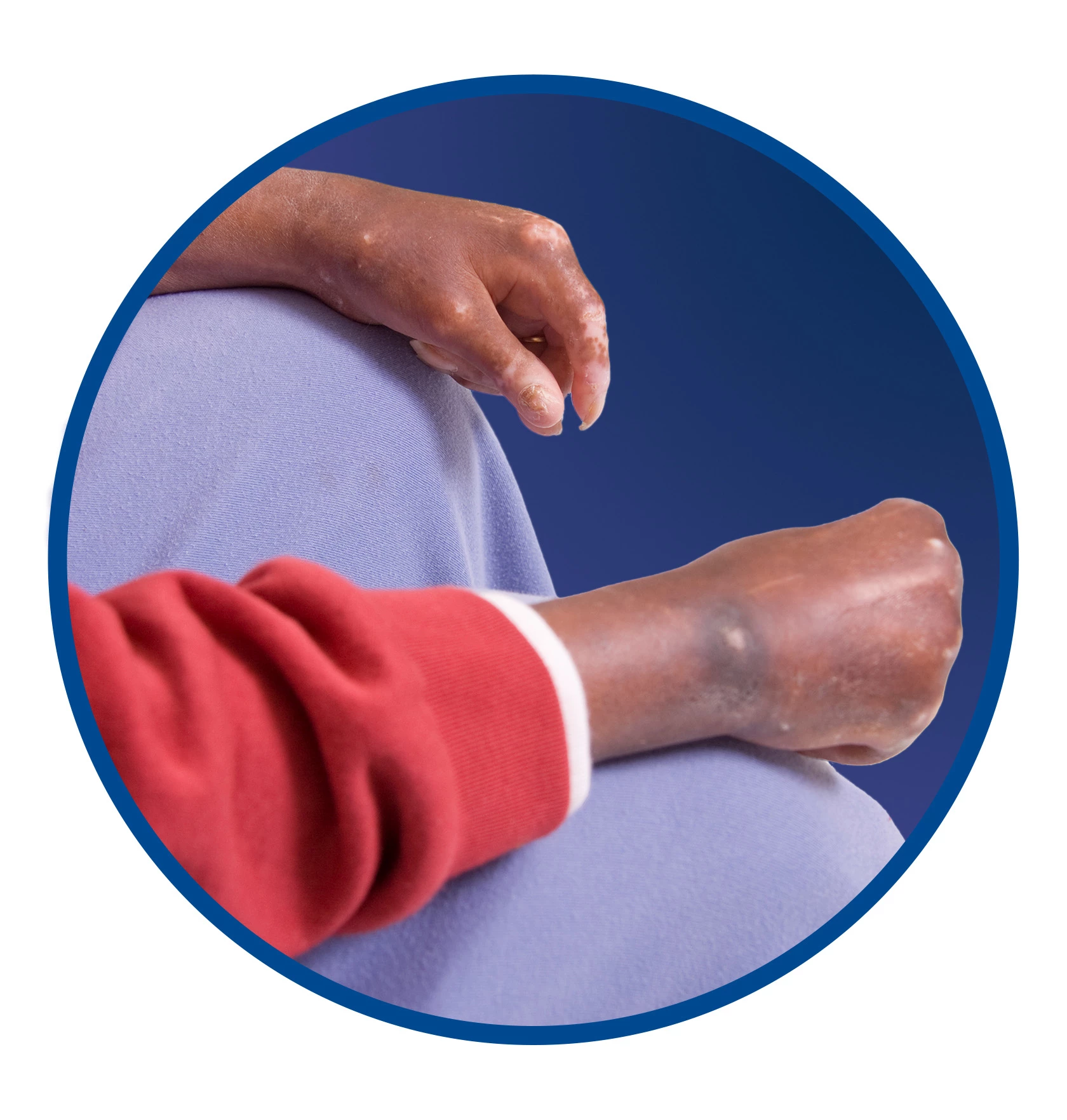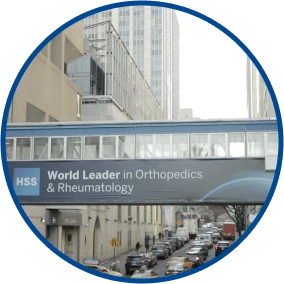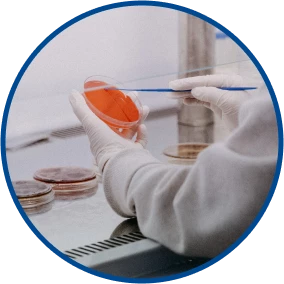SRF Resources
Research is the best hope for a cure. It's also the best source of up-to-date information here and now. Here at the Scleroderma Research Foundation, we're committed to advancing research and sharing what we learn directly with you. Whether you have been newly diagnosed, have lived with scleroderma for many years, or you care for someone with this disease, it's normal to have questions. We hope to help you learn about scleroderma, understand its complications, and find ways to treat it.
What is Scleroderma?
Scleroderma is an autoimmune disorder—a rheumatic disease that causes inflammation in the skin and other areas of the body. The name scleroderma literally means “hard skin” because the inflammation triggers the body’s own immune system to make too much collagen, leading to the hardening and tightening of the skin and connective tissues (ie: fibrosis). In the most serious cases, there can be complications resulting in damage to the heart, lungs, and digestive system.
Scleroderma is best thought of as a single disease. However, it is a complex disease that can progress in very variable ways in individual patients. Some are affected early with aggressive changes while others have milder symptoms. The disease might progress quickly or slowly. This makes a concise definition—and diagnosis—difficult.
Complications and Treatments
There are various complications and conditions associated with scleroderma. Use these educational resources to stay informed and be an even more effective advocate for your health.Raynaud’s Phenomenon
Raynaud’s phenomenon is a common medical condition, and women are much more likely to develop Raynaud’s phenomenon than men.
Skin Ulcers
For people with scleroderma, skin ulcers most often appear at the tips of fingers (digital ulcers), may extend under the nails, or to the joints at pressure points.
Calcinosis
Calcinosis is the abnormal collection of calcium salts which form under the skin and in muscles or tendons.
Telangiectasia
Telangiectasias are abnormal blood vessels that usually appear as red dots on the skin or may look like varicose veins, with a spider-web form.
Pulmonary Arterial Hypertension (PAH)
Scleroderma can cause scar tissue in the lungs and thickening in the walls of blood vessels that carry blood to and from the heart to the lungs..
Interstitial Lung Disease (ILD)
Interstitial Lung Disease (ILD) is another complication of systemic sclerosis which may affect breathing. Learn More
Gastrointestinal (GI) Complications
Most people living with scleroderma have gastrointestinal problems, which can involve different levels of risk, from simple indigestion to esophageal blockage.
Joint Complications
The increased production of collagen associated with scleroderma can cause vascular dysfunction. This can contribute to stiffness and pain in the joints and muscles.
Heart Complications
Symptoms of heart involvement in scleroderma depend on the location within the heart and the presence of any underlying conditions.
Kidney Complications
Kidney problems occur in ~15% of scleroderma patients, most often occurring with diffuse skin involvement and skin thickness in the upper arms and trunk.
Your Healthcare, Education, and More
Connect with experienced clinicians and make the most of your interactions with them, by showing up prepared and learning even more about scleroderma.
Treatment Centers
Patients who are diagnosed with scleroderma are encouraged to receive care at a specialized Treatment Center.

Making the Most of Your Doctor Visit
View this guide to how you can prepare for your visits and be your own best advocate.

The SRF Webinar Series
Dive deeper into understanding scleroderma through these in-depth webinars led by expert researchers and clinicians.

Glossary
On our website, we share a glossary of terms that covers common terminology associated with scleroderma.
Participate in Research
Your participation in research is critical to unraveling the mysteries of scleroderma. Learn how you can be involved.
CONQUER Registry
CONQUER is a registry that collects data about scleroderma patients to track and analyze the health status, disease complications, treatments, and outcomes of many patients over many years.

Clinical Trials
Clinical trials are a meaningful way to get involved with research and help find a cure. Search to find trials that are relevant to you.

CONQUEST
Consider enrolling in the CONQUEST study, a scleroderma clinical trial developed by the SRF for people with systemic sclerosis-associated interstitial lung disease (SSc-ILD).
